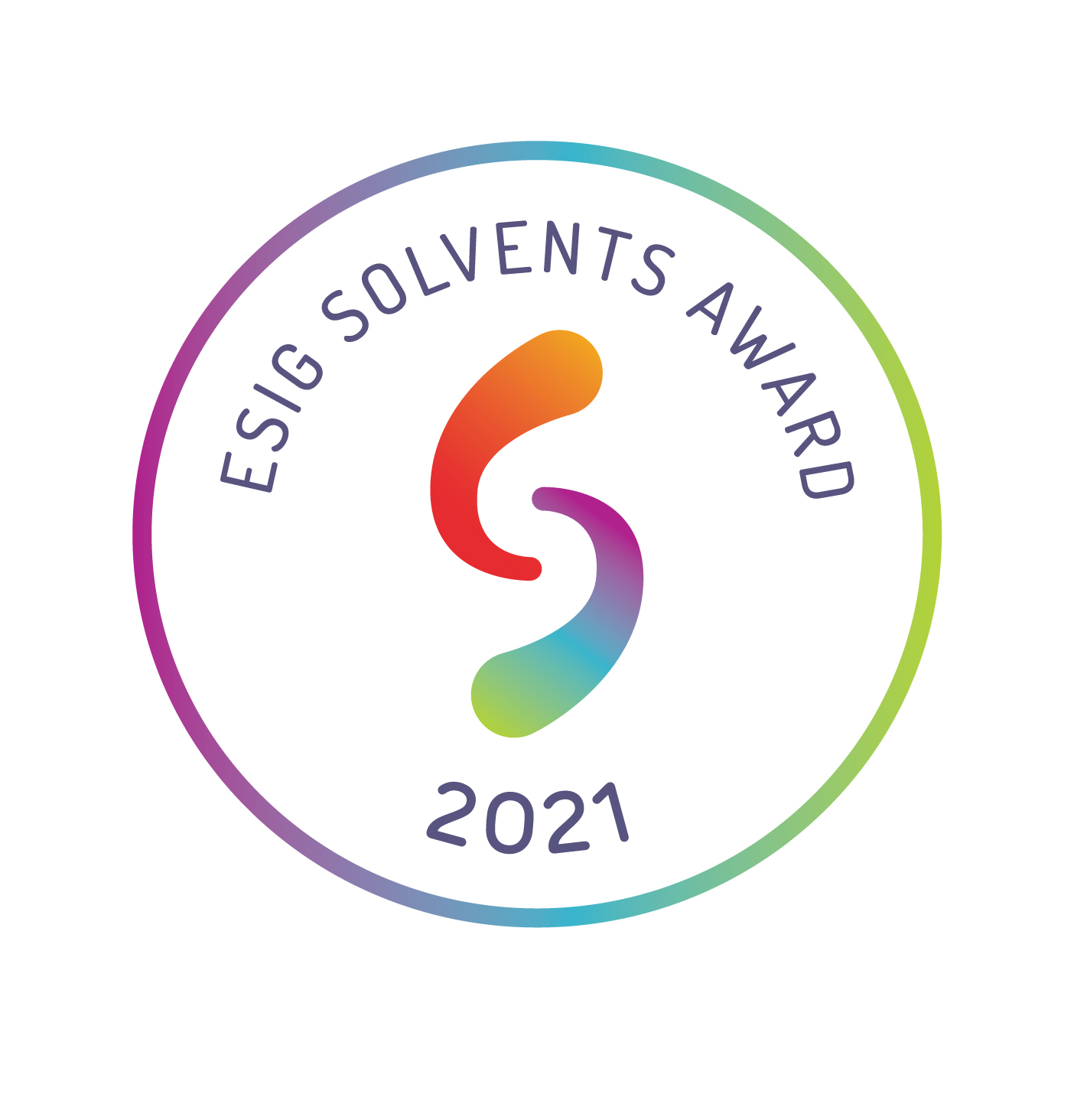ESIG Solvents Award 2021: Application Period Closed 3rd September
ESIG likes to thank all applicants for their submission. We are now evaluating the applications and a jury will select the winner by the end of this month.
The ESIG Solvents Award aims to highlight the safe and sustainable use of solvents with regard to health and safety, environmental protection or product performance or any combination of these.
The winners and shortlisted candidates of the previous editions are:
The winner of the Solvents Award 2019 is Packwise GmbH with its “Smart IBC industrial containers”. Its project showcases innovation in the field of digitalisation.
Packwise is a start-up that innovates in the field of distribution and digitalization. Its smart IBCs (Intermediate Bulk Containers) can be managed into automated circuits to gain better control and insight into the supply chain. A digital twin of the container is created, which gives increased control over the container and creates new insights into the supply chain. The Packwise industrial internet of things (IIoT) device that includes track, trace & sense functionalities, enables identification, localisation, filling level detection, temperature as well as closure control. With its innovative project, Packwise improves time and cost efficiency, helps save resources and creates a new approach to customer relationship management. . After the award ceremony on 6 November, ESIG interviewed Gesche Weger, Packwise CEO. The interview is available HERE.
The other finalists showcase innovations of solvents’ downstream users in the fields of safety and sustainability:
- ANNO Chemicals brings the concept of ‘reduce, reuse, recycle’ into life by recovering solvents that would otherwise be thrown away due to handling deviations or contaminations. Major companies are producing high quality solvents that are used in the downstream applications. However, it can happen that part of the solvents produced do not meet these standards due to handling deviations or even contaminations. These products cannot be put on the market as such and would probably end up being burnt. ANNO Chemicals has compiled a databank of customers and their processes that enable to match offer and demand for these products. The company gives also potential customers all the details on the quality of the product and provides advice on how to handle the deviating quality. Thus, the product is saved from destruction and all the efforts and resources (energy, water etc.) used to manufacture it are not wasted. ANNO Chemicals puts the concept of circular economy into practice.
- Azelis is much more than a distributor: it is a fully integrated and innovative solutions provider. The company has developed biodegradable, non-hazardous and sustainable solvents for different cleaning and degreasing activities. To do so, it has carried out a project, which consisted in testing, promoting and developing alternatives. The company used different means such as technical trainings, lab support, formulation support, application kits, etc. Azelis considers itself as “breaking new ground in our technical laboratories by combining ingredients with ideas and creating opportunities through expertise”.
- Brenntag’s campaign, “ConnectingChemistry”, aims at ensuring the longevity of the solvents industry by promoting the safe use of solvents, and managing the transition from traditional to new products. The company is a global chemical distributor managing complex supply chains for both manufacturers and consumers. Together with its customers and partners, Brenntag has taken several initiatives including the creation of safety tools (videos, learning tools, safety days etc.), and education/mentoring programmes, the production of videos for the general public, and the development of new technology merged with more traditional approaches.
- Honeywell Aerospace’s project aims at replacing a cleaning process based on a solvent blend with a safer and more reliable solvent while simplifying overall operations. The entire varnish removal process has been reviewed. The solvent previously used has been replaced by an alternative substance, combined with a new machine designed specifically for our process. Following the implementation and several months of use, the results are clear. Employee exposure has been completely suppressed and this has been endorsed by occupational medicine authorities; hazardous waste has been reduced by over 70%, and the stripping process is more efficient and quicker than with the product previously used.


